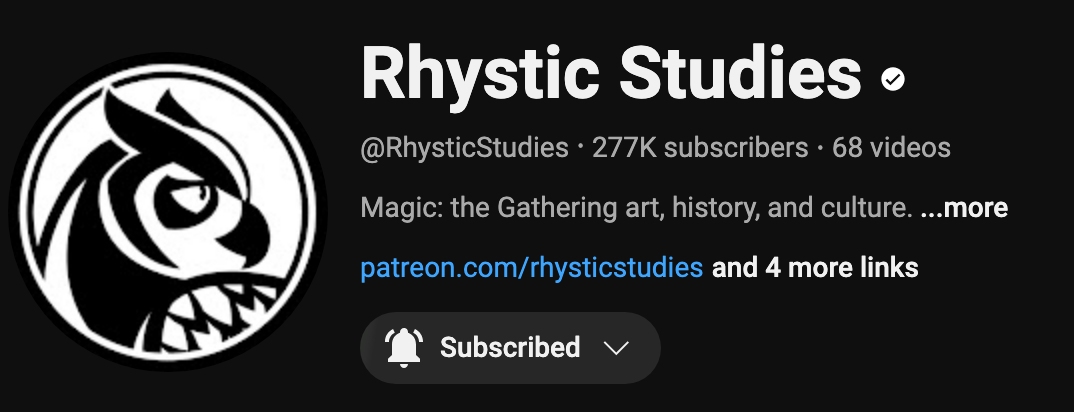July 12th, 2024: Rhystic Studies' Video on Lantern Control

I should preface that I don't play Magic the Gathering. I played a bit, using some premade decks from Target back in middle school. It had two decks, one built around Elspeth, and a blue/green deck built around Kiora. I had fun during lunch playing games against the other deck that I lent out to a friend, or playing against my friends BS freaking Sliver deck.
Anyways, I have not played in at least 8 years. But Rhystic Studies(https://www.youtube.com/@RhysticStudies) highlights one of the most fascinating games I've heard about in a while. His channel focuses on the best parts of Magic, the worlds, the stories, the incredible art and the artists behind them, the behind the scenes of designing cards, and the evolution of competitive play. I have followed his videos for over 5 years now.
Recently, I watched his new video on Hurloon Minotaur, a mascot that I had no idea existed. I decided to watch his last video, which I hadn't caught yet, about Lantern Control...
Here's the story. Over the course of Magic, some artifact cards release with weird effects, and online users theorycrafted a sort of deck that brings all these disparate ideas into a weird deck. The deck is not traditionally offensive, or defensive. It does not win by reducing the opponent's life, or destroying their deck. It is a beautiful paradox.

Lantern Control is named after Lantern of Insight, a card released in 2013, I believe. The card has both players flip the top card of their decks up, so both players can see what their opponent is about to draw. You can also destroy the Lantern to shuffle their deck.
Other powerful artifacts in the deck include Pithing Needle, which allows you to name a card, which is now ineffective for the rest of the game, like a player-guided banning. There is Codex Shredder, which, once per turn, can allow you to mill someone's deck, making them put the top card of their deck(that you both can see), into their grave.
The purpose of the deck is to lock off your opponents options. You prevent them from ever drawing anything useful. You prevent them from attacking with their creatures that they manage to summon. You look at their hand at any cards that might've slipped by, and make them discard the best options.
It's technically not impossible to beat. If your opponent sets up fast enough, before you can cut off their flow of options, or if your opponent just happens to draw their good stuff despite all of your best efforts, you could still lose. But when the engine is running, it is almost hopeless.
What a fascinating concept for a card game, no? It could only happen in a game like Magic, where new cards are added frequently, and synergies, both intentional and unintentional, could emerge across time.
Rhystic Studies tells this story masterfully, with energetic(but not distracting) background music, and a very elegant script. He bounces between old internet forums, tournament footage, articles by professional players, and explanations for what the deck actually is. I did not know a single card that went into this deck beforehand, but I was still able to pick up on the weird and wacky gist of it.
From what I hear, Magic is constantly in turmoil. Like many other live-service games, the playerbase is constantly cycling between frustration and celebration. The death of professional Magic playing, the constant sets of crossover content with other IPs, the ending of the old Block format that allowed for more cohesive stories, the ever rising influence of collectors and whales. They can feel the game they loved changing over the years, becoming more corporate, less indie.
But this story was really neat. Thanks, Rhystic Studies.
